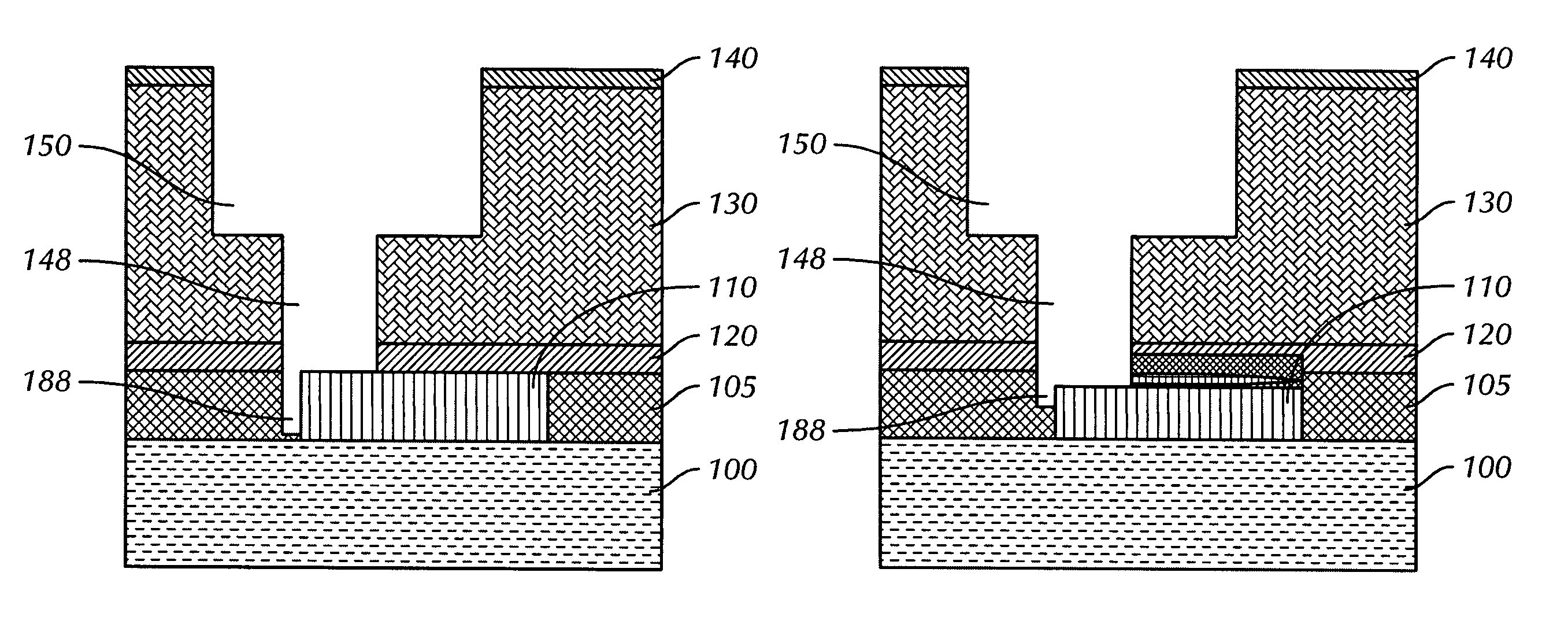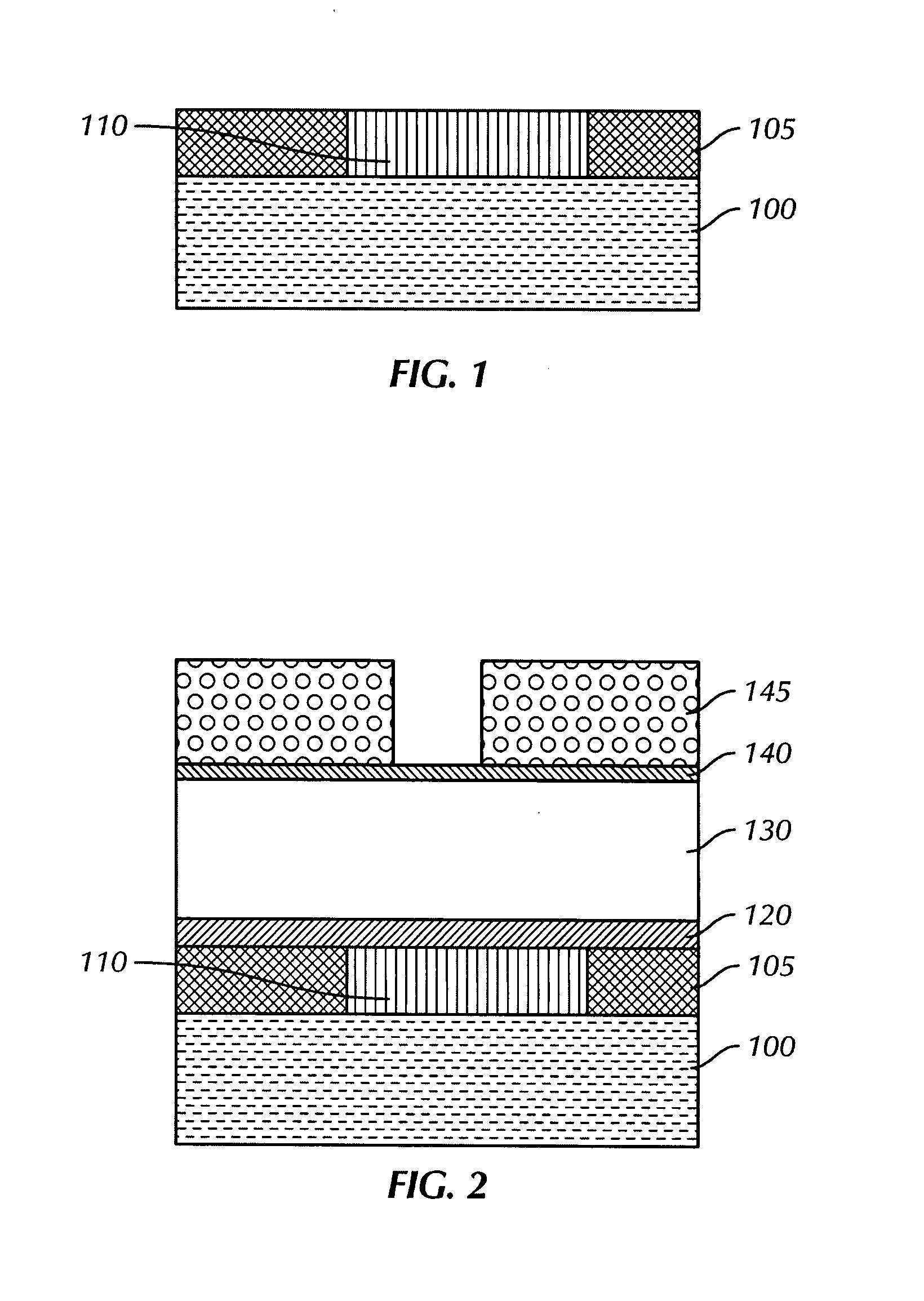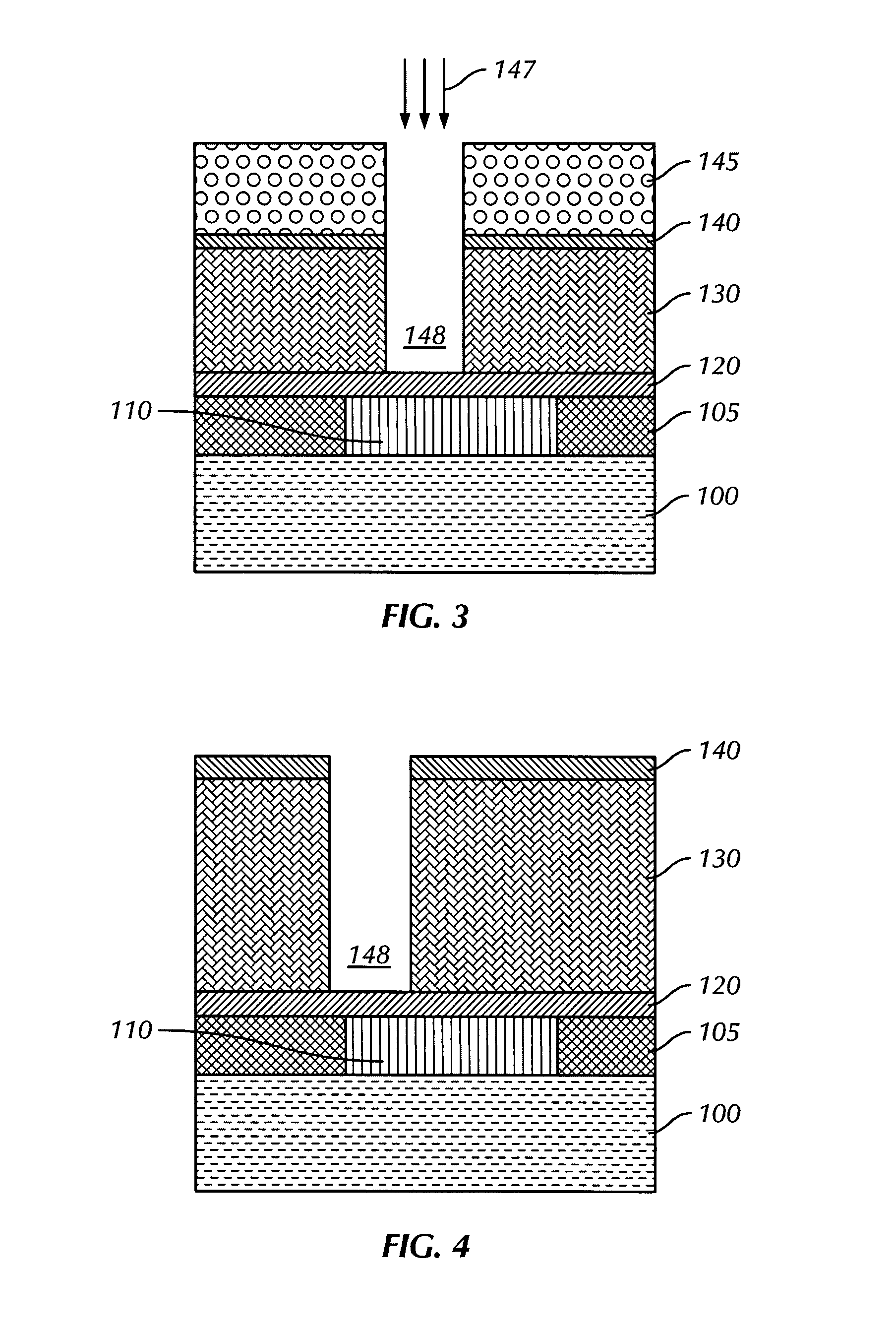Cobalt tungsten phosphate used to fill voids arising in a copper metallization process
a technology of copper metallization and copper phosphate, which is applied in the direction of semiconductor devices, semiconductor/solid-state device details, electrical devices, etc., can solve the problems of reducing the speed of semiconductor circuits, forming voids in copper-filled trenches and vias, and rapidly distributing copper through various materials
- Summary
- Abstract
- Description
- Claims
- Application Information
AI Technical Summary
Benefits of technology
Problems solved by technology
Method used
Image
Examples
Embodiment Construction
[0024]The methods and structures described herein do not form a complete process for manufacturing semiconductor device structures. The remainder of the process is known to those of ordinary skill in the art and, therefore, only the process steps and structures necessary to understand the present invention are described herein.
[0025]The present invention can be applied to microelectronic devices, such as highly integrated circuit semiconductor devices, processors, micro electromechanical (MEM) devices, optoelectronic devices, and display devices. In particular, the present invention is highly useful for devices requiring high-speed characteristics, such as central processing units (CPUs), digital signal processors (DSPs), combinations of a CPU and a DSP, application specific integrated circuits (ASICs), logic devices, and SRAMs.
[0026]In the present invention a barrier layer is formed between multilayer interconnections without the need to subsequently form a thick cap layer that ser...
PUM
| Property | Measurement | Unit |
|---|---|---|
| thickness | aaaaa | aaaaa |
| thickness | aaaaa | aaaaa |
| dielectric constant | aaaaa | aaaaa |
Abstract
Description
Claims
Application Information
 Login to View More
Login to View More - Generate Ideas
- Intellectual Property
- Life Sciences
- Materials
- Tech Scout
- Unparalleled Data Quality
- Higher Quality Content
- 60% Fewer Hallucinations
Browse by: Latest US Patents, China's latest patents, Technical Efficacy Thesaurus, Application Domain, Technology Topic, Popular Technical Reports.
© 2025 PatSnap. All rights reserved.Legal|Privacy policy|Modern Slavery Act Transparency Statement|Sitemap|About US| Contact US: help@patsnap.com



